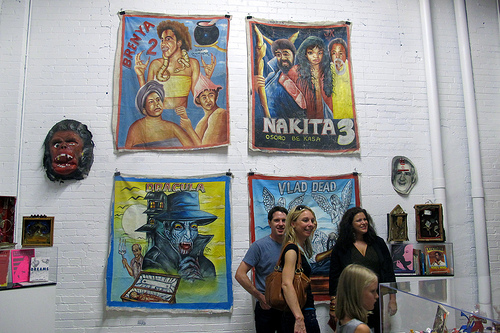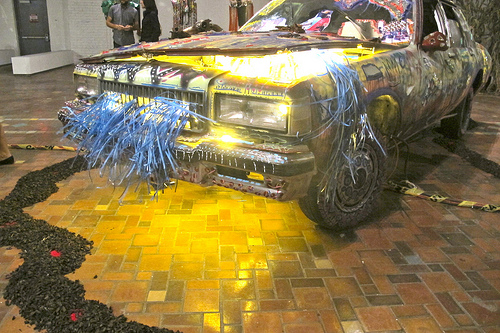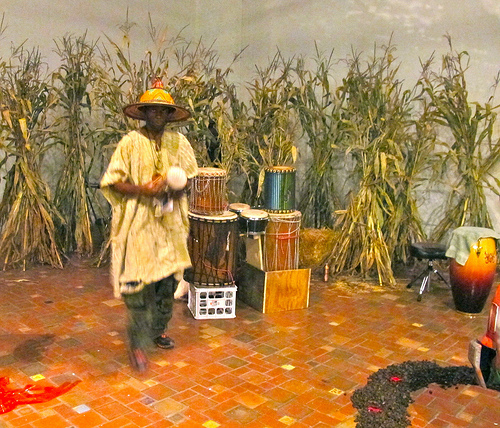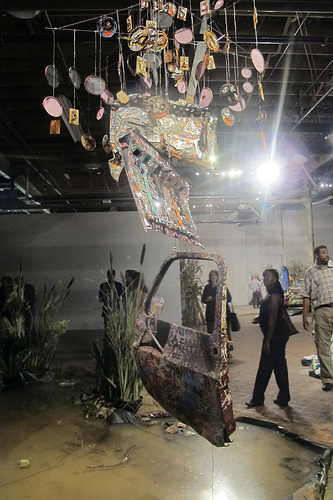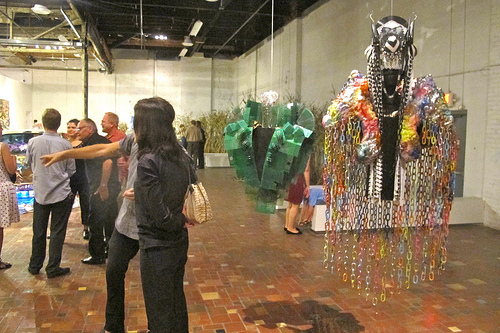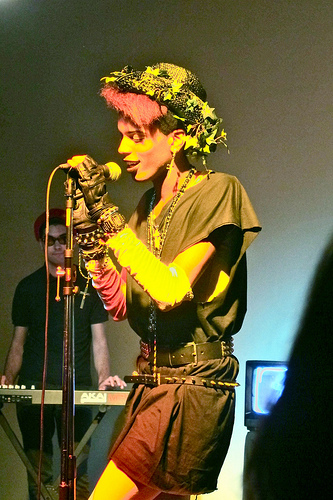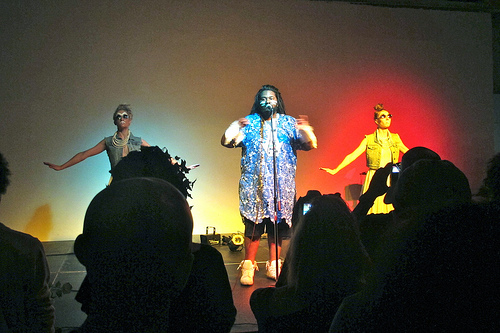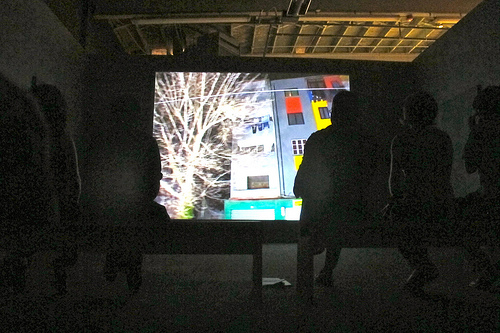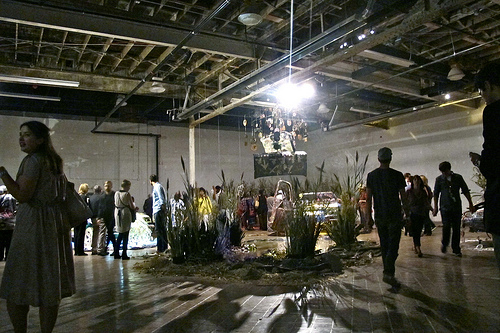
MOCAD openings: “Vision in a Cornfield” & “Anri Sala: Two Films”
The winter program at the Museum of Contemporary Art Detroit (a Knight Arts grantee) opened on Friday in a blowout event featuring live music, colorful attendees and the unveiling of two incredibly fascinating exhibits.
“Vision in a Cornfield” has transformed the MOCAD’s main gallery into a truly otherworldly experience.
“Vision In A Cornfield“ is a multilayered installation that includes work by a wide assortment of contributors, including core members of the Ogun/Kcalb Gniw Spirit collective, as well as mixed-media pieces from Aaron Ibn Pori Pitts, psyche music band Destroy All Monsters, Apetechnology, Olayami Dabls, Jennifer Price and Levon Millross. The smaller galleries of the exhibit contain source material displayed and presented conventionally, including Destroy All Monsters memorabilia and excerpts from the collection of Aaron Ibn Pori Pitts, who played a critical role in contributing and preserving work with the Black Arts Movement (the artistic branch of the Black Power movement).
Some of the memorabilia on display from Destroy All Monsters, which draws from a wide array of cultural resources, including sci-fi B-movies.
The cornerstone of the exhibit represents the intersection of these two perspectives, in a large-scale installation that features the ceremonial conversion of abandoned vehicles into heavily adorned and hydraulically animated African fetish objects. The presentation is a fusion of an experience had by Destroy All Monsters’ Mike Kelley and Cary Loren — an encounter with a still-running, empty vehicle in a cornfield in Wixom, Michigan — and the unsanctioned work in the streets of Detroit by Ogun centering around the transformation of abandoned vehicles into art objects.
One of several vehicles, adorned and surrounded by prayer circles in different media.
One of the participants in the live ritual aspect of the opening, which included drumming, singing and dancing.
The fetish objects took a range of forms, including (auto)mobile and costume pieces.
There were a wild array of outfits at the MOCAD, both within the exhibits, and on the attendees.
The scene at the MOCAD opening was one of great celebration and ancient ceremony, with drummers and dancers working around the automobiles in the main exhibit hall to enact the transformation. Attendees and artists alike wore colorful and outrageous ensembles, and acted as enthusiastic participants in both the formal rituals in the gallery, and the live musical entertainment that followed.
Duane the Teenage Weirdo lived up to his title, with a stream-of-consciousness performance that was equally grating and hilarious.
Tunde Olaniran was the featured performer of the evening, and absolutely dominated the stage with gripping vocals and outstanding choreography.
The second exhibit, “Anri Sala: Two Films” deals with found rather than constructed landscapes. Dammi I Colori (2003) is a 16-minute short, narrated by Edi Rama, an art school acquaintance of Sala and then mayor of his native Tirana, Albania. As the camera pans across the facades of Communist-era apartment blocks that dominate the Tiranian cityscape, Rama discusses the rationale and effect of his early mayoral decision to paint the drab gray facades of these buildings in bright blocks of color. The concepts at play in Dammi I Colori are pushed further in the second film, Long Sorrow (2005), a 13-minute exploration of a building in Berlin (where Sala currently resides and works) nicknamed “Lange Jammer” (Long Sorrow), which features saxophone player Jemeel Moondoc suspended on the façade of the building.
A moment from “Dammi I Colori” (2003).
Both exhibits are not to be missed, and on display during regular MOCAD hours through December 30.
Museum of Contemporary Art Detroit: 4454 Woodward Ave., Detroit; 313- 832-6622; mocadetroit.org.
Recent Content
-
Artsarticle ·
-
Artsarticle ·
-
Artsarticle ·
